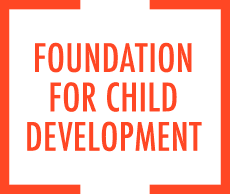https://www.fcd-us.org/title-i-and-early-childhood-programs-a-look-at-investments-in-the-nclb-era/
This paper explores the wide range of ways in which school districts are using Title I funds for early education through Kindergarten and examines how the implementation of NCLB has impacted those investments. It also makes recommendations for Local Education Agencies (LEAs) interested in creating Title I-funded early education programs or thinking about how to sustain these types of investments in the face of policy and funding challenges.
CLASP spent more than two years examining strategies to encourage and sustain Title I investments in high-quality early education programs in local communities. Their initial findings were reported in Missed Opportunities? The Possibilities and Challenges of Funding High-Quality Preschool through Title I of the No Child Left Behind Act.
Building on the research and analysis in Missed Opportunities, CLASP conducted extensive Web-based research to identify promising models, review local policies and documents, and find local policymakers to interview. CLASP also used ongoing conversations with early education administrators to identify more than 100 schools and districts with some history of using Title I for early education programs.
CLASP conducted interviews with more than 30 states and districts-including districts with increasing Title I allocations and others with decreasing allocations, and districts in states with a history of investments in Prekindergarten and others in states without such a history-using a survey protocol that we developed to understand how schools and districts are using Title I for early education, the history of these investments, and the barriers and flexibility in the law. CLASP interviewed state and local Title I directors, early childhood directors, and district superintendents and, where possible, collected financial information on Title I early education investments.
This paper discusses:
- Federal and state funding for early education;
- The opportunity of Title I funding for early education;
- The story behind Title I investments in early education, through illustrations of a wide range of models from school districts;
- How NCLB is impacting Title I investments in early education; and
- Recommendations for LEAs.
The paper concludes that Using Title I funds for early education is not a radical, new idea. Many schools and districts have been using these funds to invest in young children for decades.
While the accountability requirements of NCLB have created new challenges to sustaining or expanding those investments, NCLB also offers an opportunity and an incentive to support our youngest children.
Many LEAs are committed to supporting early education, and several openings and strategies exist that may enable LEAs to take advantage of the flexibility of Title I funds to use them to support early education and to support broad educational goals. Yet, there is emerging evidence that the requirements of NCLB and the limited funding available are putting district policymakers in the difficult position of defunding successful early childhood programs.
While there are actions that LEAs can take at present, there are also ways in which NCLB could be improved to support high-quality early education. To that end, CLASP has issued a set of federal recommendations for reauthorization of NCLB. They include:
- Improved data collection; enhanced language on transitions between community-based early childhood programs and local schools.
- Sustaining and supporting local flexibility in use of funds for discretionary purposes, such as early childhood programs.
- Ensuring that joint professional development opportunities are available to build knowledge of child development and appropriate practices with ELLs.
- Encouraging state education agencies to use their set-aside funds to promote and support early childhood programs at the local level.
- Increasing funding.
